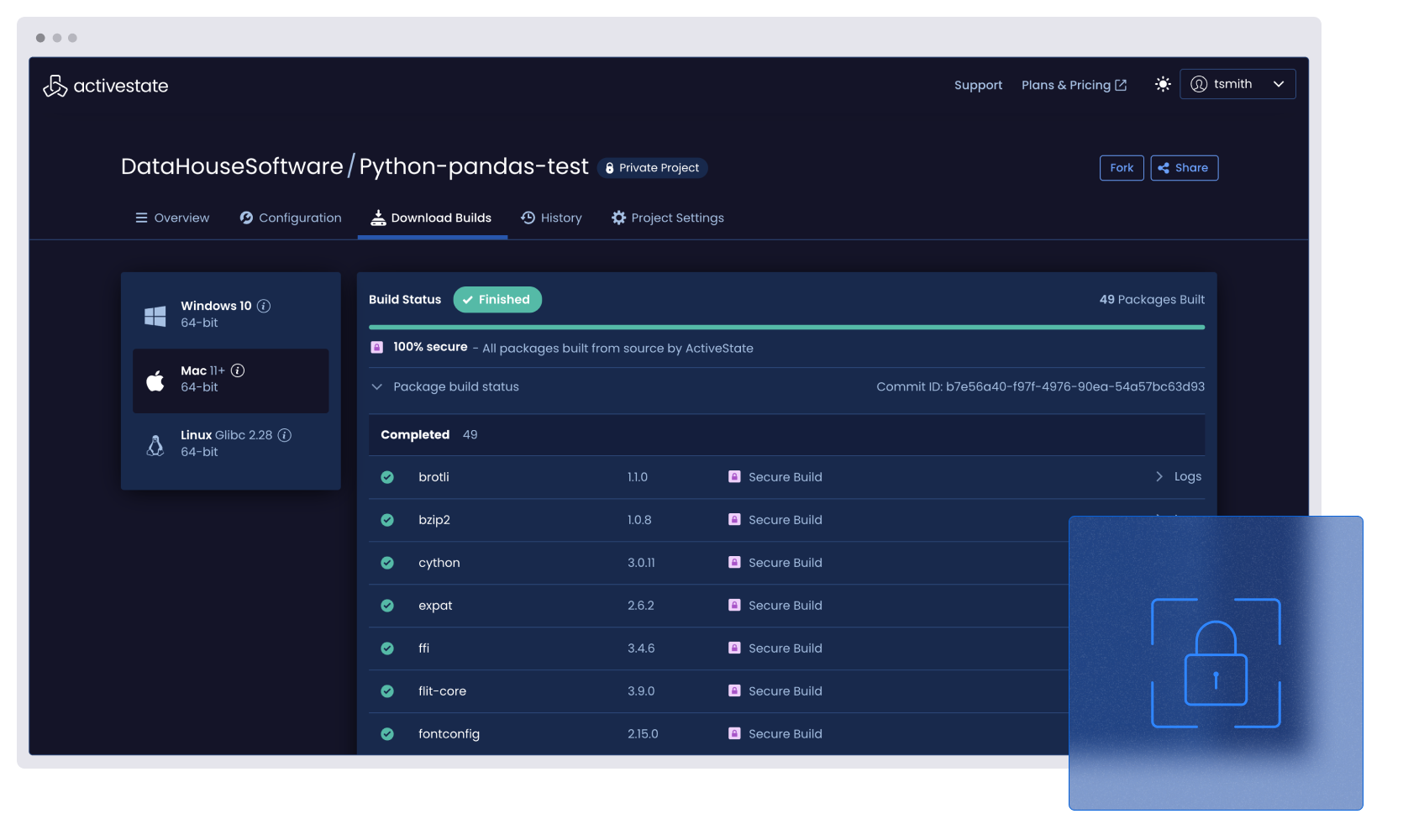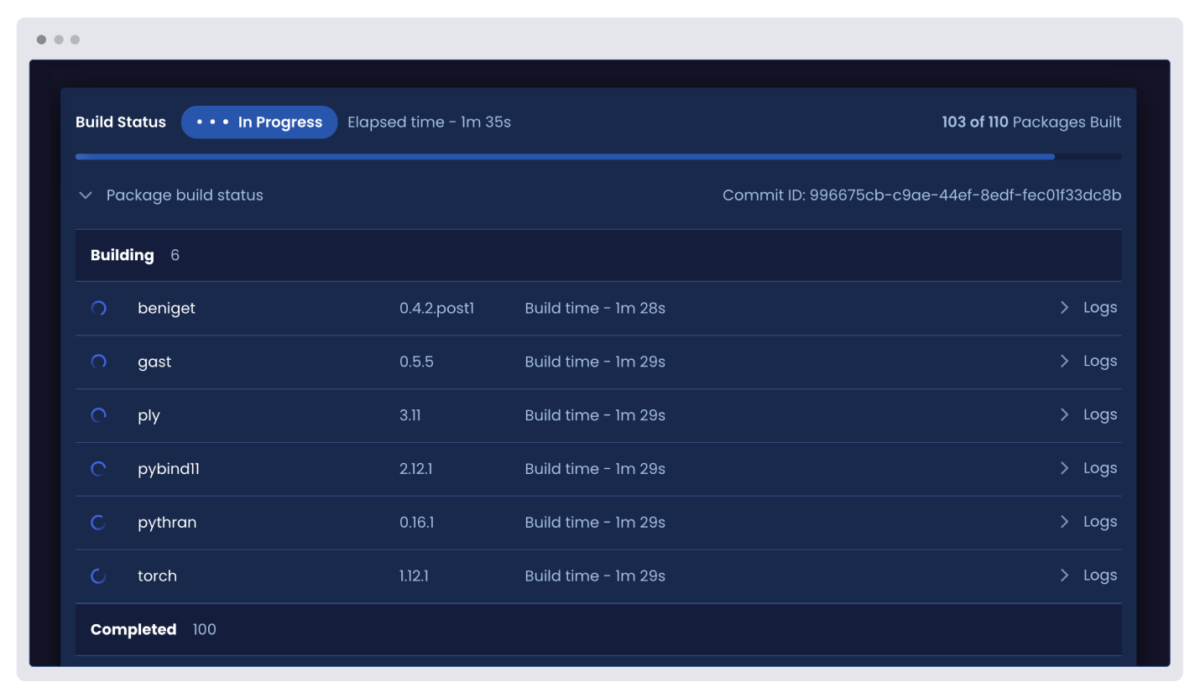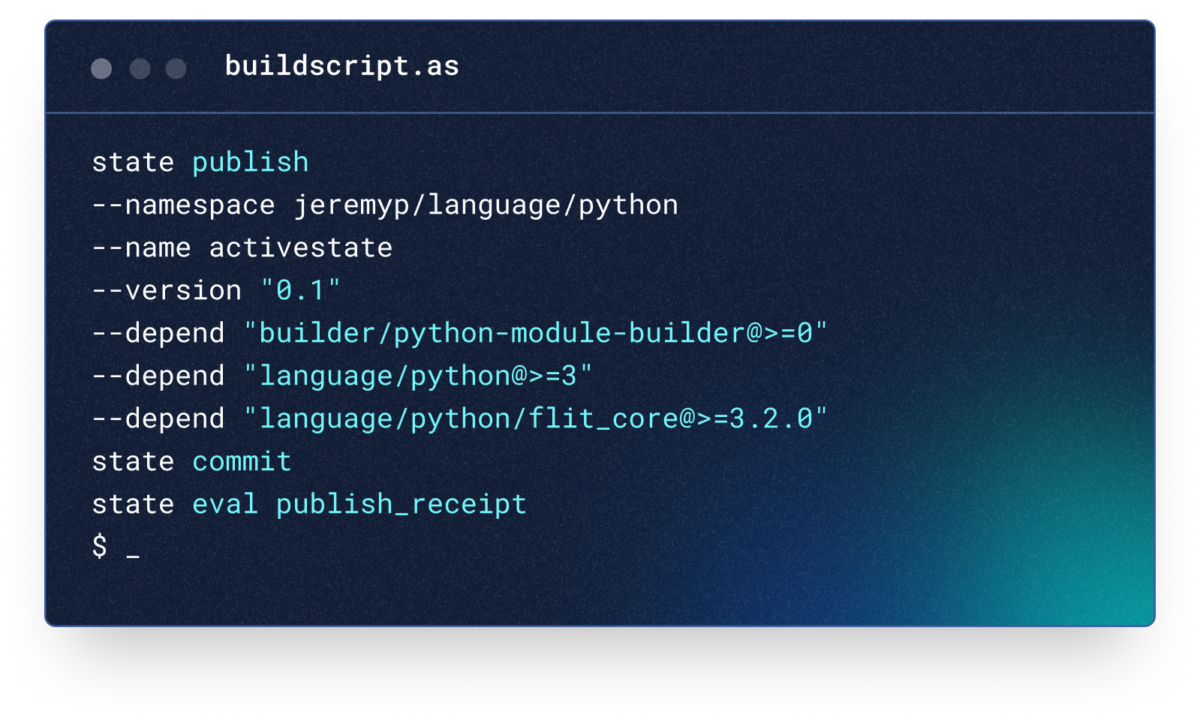We surveyed over 300 DevSecOps pros to understand how they’re managing vulnerabilities—discover the results

Access a ready-to-use, hardened build infrastructure. Enhance your software supply chain security without the complexity of building and maintaining your own system.


Upload your own code, write your own build scripts, and create a personalized secure supply chain. Tailor the build process to your specific needs, while maintaining security and compliance.
Easily slot ActiveState’s secure build system into your existing CI/CD pipeline, and extend it using build scripts to meet your specific requirements.

Lorem ipsum dolor sit amet, consectetur adipiscing elit, sed do eiusmod tempor incididunt ut labore et dolore magna aliqua. Ut enim ad minim veniam, quis nostrud.

Identifying all the open source components your organization builds, deploys & makes use of is never straightforward. Learn how to it can be.

Identifying all the open source components your organization builds, deploys & makes use of is never straightforward. Learn how to it can be.

Identifying all the open source components your organization builds, deploys & makes use of is never straightforward. Learn how to it can be.
Chat with a member of our product team today.
Chat with a member of our product team today.
To provide the best experiences, we and our partners use technologies like cookies to store and/or access device information. Consenting to these technologies will allow us and our partners to process personal data such as browsing behavior or unique IDs on this site and show (non-) personalized ads. Not consenting or withdrawing consent, may adversely affect certain features and functions.
Click below to consent to the above or make granular choices. Your choices will be applied to this site only. You can change your settings at any time, including withdrawing your consent, by using the toggles on the Cookie Policy, or by clicking on the manage consent button at the bottom of the screen.